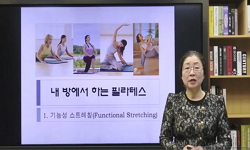Purpose: The purpose of this study is to analyze research trends in lPaites-related research using big data analysis. This study is to identify research trends throuhg network analysis using keywords from domestic theses and journal articles related t...
http://chineseinput.net/에서 pinyin(병음)방식으로 중국어를 변환할 수 있습니다.
변환된 중국어를 복사하여 사용하시면 됩니다.
- 中文 을 입력하시려면 zhongwen을 입력하시고 space를누르시면됩니다.
- 北京 을 입력하시려면 beijing을 입력하시고 space를 누르시면 됩니다.
https://www.riss.kr/link?id=A108715504
- 저자
- 발행기관
- 학술지명
- 권호사항
-
발행연도
2023
-
작성언어
Korean
- 주제어
-
KDC
692
-
등재정보
KCI등재
-
자료형태
학술저널
- 발행기관 URL
-
수록면
163-175(13쪽)
- DOI식별코드
- 제공처
-
0
상세조회 -
0
다운로드
부가정보
다국어 초록 (Multilingual Abstract)
Method: Frequency analysis, network centrality analysis, and CONCOR analysis were performed on keywords extracted from 706 Pilates-related papers published from 2004 to 2022.
Results: The results of this study are as follows. A frequency analyss iof Pilates-related studies revealed the following terms in order: ‘women’, ‘program’, ‘health-relaetd fitness’, ‘satisfaction’, ‘musculoskeletal system’, ‘apparatus Pilates’, and ‘mat Pilates’. Secondly, network centrality analysis highlighted that ‘women’, ‘program’, ‘health-related fitness’, ‘musculoskeletal system’, and ‘balance’ had high network centrality. Thirdly, CONCOR analysis focusing on Pilates-related keywords revealed clusters such as ‘women’, ‘pregnant women’, ‘specialists’, ‘studio’, and ‘instructors’.
Conclusion: The conclusion of Pilates-related research is as follows: First, there is a need to move away from female-centered research and broaden the research scope to encompass the entire population. Second, Pilates research should progress beyond a narrow progra m and encompass studies verifying its physiological, physical, and psychological effects through a comprehensive curriculum. Third, in diversifying Pilates-related research topics, it is crucial to explore ont only the significance of improving the studio service environment but also the professionalism of instructors.
Purpose: The purpose of this study is to analyze research trends in lPaites-related research using big data analysis. This study is to identify research trends throuhg network analysis using keywords from domestic theses and journal articles related to Pilates.
Method: Frequency analysis, network centrality analysis, and CONCOR analysis were performed on keywords extracted from 706 Pilates-related papers published from 2004 to 2022.
Results: The results of this study are as follows. A frequency analyss iof Pilates-related studies revealed the following terms in order: ‘women’, ‘program’, ‘health-relaetd fitness’, ‘satisfaction’, ‘musculoskeletal system’, ‘apparatus Pilates’, and ‘mat Pilates’. Secondly, network centrality analysis highlighted that ‘women’, ‘program’, ‘health-related fitness’, ‘musculoskeletal system’, and ‘balance’ had high network centrality. Thirdly, CONCOR analysis focusing on Pilates-related keywords revealed clusters such as ‘women’, ‘pregnant women’, ‘specialists’, ‘studio’, and ‘instructors’.
Conclusion: The conclusion of Pilates-related research is as follows: First, there is a need to move away from female-centered research and broaden the research scope to encompass the entire population. Second, Pilates research should progress beyond a narrow progra m and encompass studies verifying its physiological, physical, and psychological effects through a comprehensive curriculum. Third, in diversifying Pilates-related research topics, it is crucial to explore ont only the significance of improving the studio service environment but also the professionalism of instructors.
목차 (Table of Contents)
- Ⅰ. 서론
- Ⅱ. 연구 방법
- Ⅲ. 연구 결과
- Ⅳ. 논의
- Ⅴ. 결론 및 제언
- Ⅰ. 서론
- Ⅱ. 연구 방법
- Ⅲ. 연구 결과
- Ⅳ. 논의
- Ⅴ. 결론 및 제언
- 참고문헌
- ABSTRACT
동일학술지(권/호) 다른 논문
-
- 한국사회체육학회
- 이경화(Lee, Kyung-Hwa)
- 2023
- KCI등재
-
Long-Running Legacy of Discursive Unification: Joint Team and Joint Hosting
- 한국사회체육학회
- Dongkyu Na(나동규)
- 2023
- KCI등재
-
중등학교 체육수업의 안전 활동 영역에 대한 교수학습의 실효성 탐색
- 한국사회체육학회
- 이희수(Lee, Heesu)
- 2023
- KCI등재
-
MZ세대 태권도 수련생이 인식하는 태권도장 선택속성과 지각가치 및 수련지속의도의 관계
- 한국사회체육학회
- 박명은(Park, Myoung Eun)
- 2023
- KCI등재





 DBpia
DBpia



